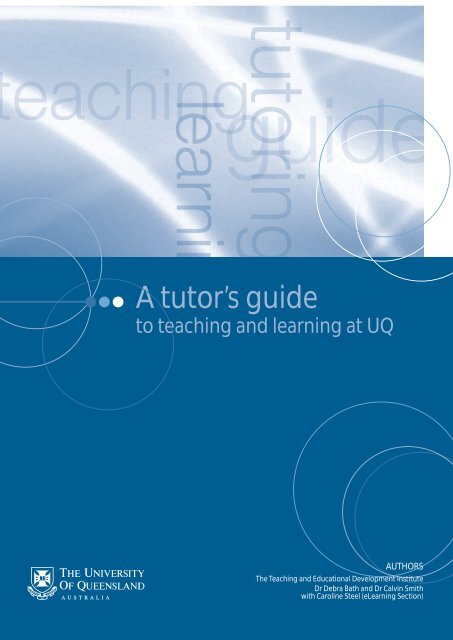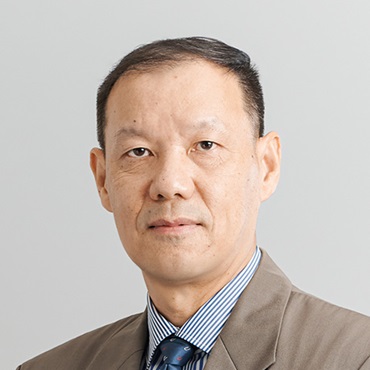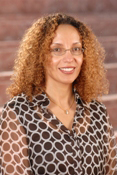| Wednesday 11 December 2019 |
| Keraton Ballroom |
| SESSION A3 (Session Chair : Agung Trisetyarso, Ph.D) |
| 08:30 - 08:45 | 1570593543 | Graphene based futuristic green batteries for energy harvesting |
| 08:45 - 09:00 | 1570568511 | Question-Led Learning in Educational Game of Graph Data Structure Traversal Algorithm |
| 09:00 - 09:15 | 1570580693 | Question Authoring for Learning Programming Skills based on the Programmed Visual Content Comparison Method |
| 09:15 - 09:30 | 1570580859 | The Effects of Seat Location-based Teaching Assistant Support System on the Awareness of Self-Regulated Learning and Learning Performance |
| 09:30 - 10:00 | Coffee Break |
| Pemandengan 1 |
| SESSION B3 (Session Chair : Dr Yaya Heryadi) |
| 08:30 - 08:45 | 1570581911 | Capstone project implementation using Infrastructure as a Service: The Learning Experience |
| 08:45 - 09:00 | 1570582145 | A Survey Study on Higher Education Trends among Information Technology Professionals in Sri Lanka |
| 09:00 - 09:15 | 1570582154 | Thinking in imperative or objects? A study on how novice programmer thinks when it comes to designing an application |
| 09:15 - 09:30 | 1570582202 | Practical Exploration of Integrating Computational Thinking into University Computer Foundation Education |
| 09:30 - 10:00 | Coffee Break |
| Pemandengan 2 |
| SESSION C3 (Session Chair : Spits Warnars Harco Leslie Hendric, Ph.D) |
| 08:30 - 08:45 | 1570568505 | A Conversational Assistant on Mobile Devices for Primitive Learners of Computer Programming |
| 08:45 - 09:00 | 1570584655 | Incorporating Industry into the Curriculum: Applied Learning in Computer Science |
| 09:00 - 09:15 | 1570587813 | Preparing Software Quality Assurance Professionals: Metamorphic Exploration for Machine Learning |
| 09:15 - 09:30 | 1570587952 | Designing Learning Activities for Experiential Learning in a Design Thinking Course |
| 09:30 - 10:00 | Coffee Break |
| Pemandengan 3 |
| SESSION D3 (Session Chair : Prof. Natalia Filiminova, D.Sc) |
| 08:30 - 08:45 | 1570588485 | OER: Six Perspectives on Global Misconceptions and Challenges |
| 08:45 - 09:00 | 1570588565 | Malware Detection using Hybrid Autoencoder Approach for Better Security in Educational Institutions |
| 09:00 - 09:15 | 1570588625 | Risk Assessment on Cloud Computing for The Learning System in The Education Environment |
| 09:15 - 09:30 | 1570568431 | Assessing Students' Behavior in Error Finding Programming Tests: An Eye-Tracking Based Approach |
| 09:30 - 10:00 | Coffee Break |
| Pemandengan 4 |
| SESSION E3 (Session Chair : Dr Harisno) |
| 08:30 - 08:45 | 1570588941 | Gender Disparity in Computer Science Education in Bangladesh: A Study of Women's Participation in Computer Science |
| 08:45 - 09:00 | 1570588954 | Enhancing Teaching Effectiveness in Mobile Application Development with Structured Practice |
| 09:00 - 09:15 | 1570589197 | Comparison of Data Mining Classification Algorithms for Student Performance |
| 09:15 - 09:30 | 1570589239 | Analysis of Learning Effect using a SQL Learning Support System in the Class |
| 09:30 - 10:00 | Coffee Break |
| Keraton Ballroom |
| 10:00 - 11:00 | Keynote Speech by Prof Minjuan Wang, Professor of Learning Design and Technology, San Diego State University (USA) (Moderator: Dr Yaya Heryadi) |
| Keraton Ballroom |
| SESSION A4 (Session Chair : Agung Trisetyarso, Ph.D) |
| 11:00 - 11:15 | 1570591600 | Implementation of Mobile game for Learning Religion |
| 11:15 - 11:30 | 1570591746 | A Pedagogy that Uses a Kaggle Competition for Teaching Machine Learning: an Experience Sharing |
| 11:30 - 11:45 | 1570595298 | EEG Signal Based Identification of Words on Exam Models with Yes-No Answers for Students with Visual Impairments |
| 11:45- 12:00 | 1570596118 | Architecture of High-Order Thinking Skills Game to Improve Ability |
| 12:00 - 13:00 | Lunch |
| Pemandengan 1 |
| SESSION B4 (Session Chair : Dr Yaya Heryadi) |
| 11:00 - 11:15 | 1570600979 | Design Thinking For Computational Creativity - A Case Study of International Exchanges using Game and Animation (2014-recent) |
| 11:15 - 11:30 | 1570548996 | Design, Development and Delivery of a Complimentary STEM for Primary School Pupils |
| 11:30 - 11:45 | 1570590832 | Gamified Flipped Classroom Learning Approach: A Case Study of AJ University |
| 11:45- 12:00 | 1570563496 | A Comparative Study of Teaching Problem-Solving in Mathematics Secondary Schools in Malaysia and South Korea |
| 12:00 - 13:00 | Lunch |
| Pemandengan 2 |
| SESSION C4 (Spits Warnars Harco Leslie Hendric, Ph.D) |
| 11:00 - 11:15 | 1570565290 | Mirror-mirror on the Wall, Which Teachers Use Educational Technology in Mathematics Classroom- Malaysians or South Koreans? |
| 11:15 - 11:30 | 1570567202 | Academic Success in 1St-Year Engineering Students: Key Factors |
| 11:30 - 11:45 | 1570567288 | Representational Fluency in Education: A Literature Review and the Proposal of a New Instrument |
| 11:45- 12:00 | 1570588906 | Proposed Plugin for Collaborative Game Based Learning |
| 12:00 - 13:00 | Lunch |
| Pemandengan 3 |
| SESSION D4 (Sessiomn Chair : Prof Natalia Filiminova, D.Sc) |
| 11:00 - 11:15 | 1570567531 | Building Learning Communities Among English Learners in STEM Majors - Case Studies of Undergraduates in Chinese Universities |
| 11:15 - 11:30 | 1570567755 | Learning Effects in Programming Learning Using Python and Raspberry Pi: Case Study with Elementary School Students |
| 11:30 - 11:45 | 1570567802 | The Relationship Between Self-Determination, Emotional Intelligence Towards Achievement Motivation in Mathematics |
| 11:45- 12:00 | 1570588898 | Learning Styles and Innovative Classroom Activities and Tasks |
| 12:00 - 13:00 | Lunch |
| Pemandengan 4 |
| SESSION E4 (Session Chair Dr Harisno) |
| 11:00 - 11:15 | 1570568518 | Audio Rendering of Mathematical Expressions for Blind Students: a Comparative Study Between MathML and Latex |
| 11:15 - 11:30 | 1570568530 | Effect of Inductive Teaching Method To Improve Science Process Skills In Electrochemistry |
| 11:30 - 11:45 | 1570572396 | Development of Mobile Application for the Concept of Pattern Recognition in Computational Thinking for Mathematics Subject |
| 11:45- 12:00 | 1570566400 | Similarity Detection Techniques for Academic Source Code Plagiarism and Collusion: A Review |
| 12:00 - 13:00 | Lunch |
| Keraton Ballroom |
| 10:00 - 16:00 | Poster Session (Session Chair : A. Raharto Condrobimo)
For detail information please see Poster session schedule at the end of table |
| Keraton Ballroom |
| SESSION A5 (Session Chair : A. Raharto Condrobimo) |
| 14:00 - 14:15 | 1570564441 | Improving Student Engagement and Performance in Computing Final Year Projects |
| 14:15 - 14:30 | 1570564972 | A Black Box Model of Academic Degree Knowledge System Based Computer Network Course Construction Scheme for Postgraduates Students |
| 14:30 - 14:45 | 1570582852 | A Parametric Diffraction Pattern based Game Module Design for the Experiment of Optical Analogy of Reflected Electron Diffraction from One-Dimensional Structures |
| 14:45 - 15:00 |
| 15:00 - 15:30 | Coffee Break |
| Pemandengan 1 |
| SESSION B5 (Session Chari Dr yaya Heryadi) |
| 14:00 - 14:15 | 1570582855 | Improving High School Girls' 21st Century Skills: Design, Implementation, Assessment on megaGEMS Research Camp |
| 14:15 - 14:30 | 1570584042 | Lecture Notes on the relationship between the power spectrum estimated by MVDR and CBF |
| 14:30 - 14:45 | 1570584416 | Lecture Notes on the Application of Eigenvalue Decomposition in Signal Processing |
| 14:45 - 15:00 | 1570588832 | A Systematic Literature Review on the roles of Interest and Motivation in STEM Education |
| 15:00 - 15:30 | Coffee Break |
| Pemandengan 2 |
| SESSION C5 (Session Chair : Spits Warnars Harco Leslie Hendric, Ph.D) |
| 14:00 - 14:15 | 1570591765 | Identifying Factors for Integrating Math and Music Education at Primary Schools in Namibia |
| 14:15 - 14:30 | 1570567079 | Figure Drawing Method Based on Human Motion Using Pictogramming |
| 14:30 - 14:45 | 1570567549 | Virtual Laboratory: Facilitating Teaching and Learning in Cybersecurity for Students with Diverse Disciplines |
| 15:00 - 15:30 | Coffee Break |
| Pemandengan 3 |
| SESSION D5 (Session Chair : Prof Natalia Filiminiva, D.Sc) |
| 14:00 - 14:15 | 1570560055 | Full Online Learning and Blended e-Learning: A Comparison of Students' Performance |
| 14:15 - 14:30 | 1570566451 | The Intelligent Classroom Client Software Design |
| 14:30 - 14:45 | 1570567563 | An Applied C Programming Exercise with Card Game Strategy and Analysis of Codes by a Grouping of Score and Code Metrics |
| 14:45 - 15:00 | 1570568013 | Analysis of Learning Modalities Towards Effective Undergraduate Cybersecurity Education Design |
| 15:00 - 15:30 | Coffee Break |
| Pemandengan 4 |
| SESSION E5 (Session Chair : Dr Harisno) |
| 14:00 - 14:15 | 1570566475 | Student's Perception on Usage of Online Social Network and Difficulties in Learning Social Science Research |
| 14:15 - 14:30 | 1570567710 | A Flipped Mode Approach to Teaching the Course of Communications Principles |
| 14:30 - 14:45 | 1570567803 | Development and Evaluation of a Farm Operation Recording Function for Promoting Reflection in Practical Training at an Agricultural High School |
| 14:45 - 15:00 | 1570567970 | Social Factors Analysis for Understanding MOOCs Usage Among University Students in China |
| 15:00 - 15:30 | Coffee Break |
| Keraton Ballroom |
| SESSION A6 (Session Chair : Agung Trisetyarso, Ph.D) |
| 15:30 - 15:45 | 1570568063 | Dysgu: A Tool to Keep Students Engaged Outside the Classroom |
| 15:45 - 16:00 | 1570568220 | Student Perception of a Learner Dashboard in MOOCs to Encourage Self-Regulated Learning |
| 16:00 - 16:15 | 1570568394 | Examining the usage of and access to online databases for academic purposes: A study at an engineering- and technology-based university in Malaysia |
| 16:15 - 16:30 | 1570568426 | Anonymous online peer assessment in an undergraduate course: An analysis of Students' perceptions and attitudes in the South Pacific |
| 16:30 - 16:45 | 1570568517 | Effectiveness of Mobile Assisted Language Learning Towards Students' Achievement and Motivation in Learning English Preposition |
| 16:45 - 17:00 | 1570568520 | Online Micro-Modules Library Production for Fundamental Programming Courses with Active Learning |
| 17:00 - 17:15 | 1570578741 | Design of Online Learning Mobile APP for the Elderly Based on Attention, Relevance, Confidence, and Satisfaction (ARCS) Motivation Model |
| 17:15 - 17:30 | 1570580615 | Automated Construction of Course Knowledge Graph Based on China MOOC Platform |
| 17:30 - 17:45 | 1570581366 | Educational Group Recommendations By Learning Group Expectations |
| 17:45 - 18:00 | 1570581488 | Engage Your Students Before Class: More Pre-Class Engagement for More Effective Flipped Classrooms |
| 18:00 - 18:15 | 1570581671 | Design and First Insights of a Case Study on Storified Programming MOOCs |
| Pemandengan 1 |
| SESSION B6 (Session Chair : Dr Yaya Heryadi) |
| 15:30 - 15:45 | 1570582045 | Developing a System to Support Formative Teacher Feedback in Foreign Language Writing |
| 15:45 - 16:00 | 1570582233 | Adaptive recommendation for question decomposition in Web-based investigative learning |
| 16:00 - 16:15 | 1570582306 | Teaching Generic Competences in Software Engineering via E Learning |
| 16:15 - 16:30 | 1570582579 | The use of Microframework for Portable and Distributed ePortfolio Development |
| 16:30 - 16:45 | 1570582912 | Design Features for Gender-specific Differences in Blended Learning within Higher Education in Indonesia |
| 16:45 - 17:00 | 1570583256 | A Quantitative Study on the Effects of Learning with Mobile Devices in MOOCs |
| 17:00 - 17:15 | 1570585446 | CHAT: a Cultural Heritage Adaptive Tutor |
| 17:15 - 17:30 | 1570588851 | Motivation as Basis for Building Infrastructure for Hardware MOOCs |
| 17:30 - 17:45 | 1570588908 | Code Free Bot: An easy way to jumpstart your chatbot! |
| 17:45 - 18:00 | 1570568056 | Design of A Web Development Attitudes Survey |
| 18:00 - 18:15 | 1570568085 | Pipelined MIPS Simulation A Plug-In to MARS for Supporting Pipelined Simulation and Branch Prediction |
| Pemandengan 2 |
| SESSION C6 (Session Chair : Spits Warnars Harco Leslie Hendric, Ph.D) |
| 15:30 - 15:45 | 1570591527 | Supporting Computer Science Student Reading through Multimodal Engagement Interfaces |
| 15:45 - 16:00 | 1570591786 | Reinforcing Blended Learning Approach by Using Blackboard Collaborate in Computer Lab Environment to Enhance Students' Learning Experience |
| 16:00 - 16:15 | 1570591837 | Success Model for Effective Use of LMS in Inculcating 21st Century Skills among University Graduates |
| 16:15 - 16:30 | 1570591839 | Impacts of Online Academic Help Seeking Behaviors on Undergraduate Student Self-Learning |
| 16:30 - 16:45 | 1570591846 | Automated Theme Allotment to Optimise Learning Outcomes in Robotic Competition |
| 16:45 - 17:00 | 1570591886 | Effective Usage of Various Answer Types of Mathematics e-Learning System |
| 17:00 - 17:15 | 1570592300 | The Challenges of Implementing Online Learning in Secondary Education |
| 17:15 - 17:30 | 1570595921 | Reconstruction of LariJava Learning Programming Website Using MVC Concept |
| 17:30 - 17:45 | 1570567079 | Figure Drawing Method Based on Human Motion Using Pictogramming |
| 17:45 - 18:00 | 1570567549 | Virtual Laboratory: Facilitating Teaching and Learning in Cybersecurity for Students with Diverse Disciplines |
| Pemandengan 3 |
| SESSION D6 (Session Chair : Dr.Phil. Lucia Dwi Krisnawati) |
| 15:30 - 15:45 | 1570568578 | Development of a Curriculum to Teach Electronics to Workers of Garments Industry in Bangladesh: A Visual Literacy Approach |
| 15:45 - 16:00 | 1570568611 | Noise levels analysis based on sensorial perception as a strategy to boost critical thinking |
| 16:00 - 16:15 | 1570580488 | Smart Public Transportation: A Systematic Literature Review |
| 16:15 - 16:30 | 1570587362 | Exploration of Key Success Factors for Determining Technological Component in Learning at Culinary Community: A Systematic Literature Review |
| 16:15 - 16:30 | 1570591741 | Addressing the Literacy Skills of B40 Students towards 4IR Workplace: Development of Future-Proof Graduate Module (FPGM) |
| 16:30 - 16:45 | 1570548998 | Engineerpreneurship: Engineers Can Be Entrepreneurs |
| 16:45 - 17:00 | 1570579898 | The Development of Innovative Blended Learning System Using Manga to Improve the Cross Cultural Communication |
| 17:00 - 17:15 | 1570581661 | Project Planning from the Viewpoint of Project Management and Systems Engineering |
| 17:15 - 17:30 | 1570588696 | Entrepreneurial and Commercialization Pathway through Project-based Learning in Higher Education |
| 17:30 - 17:45 | 1570594443 | Smart Tuition Finder: An educational App and SDGs |
| 17:45 - 18:00 | 1570568315 | An Intelligent Tutoring System with Adaptive Exercises Based on a Students' Knowledge and Misconception |
| Pemandengan 4 |
| SESSION E6 (Big Data, Analytics & Machine Learning in Education - Session Chair : Chi-Un Lei, Ph.D., SMIEEE., FHEA) |
| 15:30 - 15:45 | 1570568340 | Enhancing the Classification Performance of Students' Behavior on Serious Game using Discretization-based k-NN |
| 15:45 - 16:00 | 1570580403 | A Student's Performance Prediction Method Based on Neural Collaborative Filtering |
| 16:00 - 16:15 | 1570568340 | Factors investigation of learning behaviors affecting learning performance and self-regulated learning |
| 16:15 - 16:30 | 1570582330 | Automatic Short Answer Grading using Siamese Bidirectional LSTM Based Regression |
| 16:30 - 16:45 | 1570582639 | Sentiment analysis of preschool teachers' perceptions on ICT use for young children |
| 16:45 - 17:00 | 1570584809 | Automated English Digital Essay Grader Using Machine Learning |
| 17:00 - 17:15 | 1570588907 | Towards Automatic Engagement Recognition of Autistic Children in a Machine Learning Approach |
| 17:15 - 17:30 | 1570590326 | Web Recommended System Library Book Selection Using Item Based Collaborative Filtering Method |
| 17:30 - 17:45 | 1570591472 | Prediction Learning Achievement Indicators in Distance Learning Students |
| 19:00 - 21:00 | Gala Dinner - Pendopo - 1st floor Royal Ambarrukmo Hotel |










